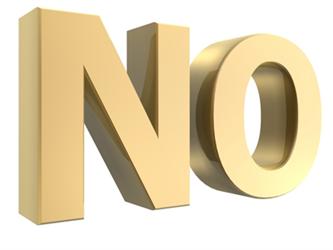 Johns Hopkins just published an interesting summary of the research out today on treating mood disorders with hallucinogens. In the most recent Depression and Anxiety Health Alert, the author chronicles the history of hallucinogens and how they affect the central nervous system to release the right kind of neurotransmitters. Per Hopkins:
Johns Hopkins just published an interesting summary of the research out today on treating mood disorders with hallucinogens. In the most recent Depression and Anxiety Health Alert, the author chronicles the history of hallucinogens and how they affect the central nervous system to release the right kind of neurotransmitters. Per Hopkins:
Hallucinogens (also called psychedelics) were a promising area of research in the 1960s and early 1970s, when they were being developed as possible treatments for a number of conditions, including depression, anxiety, and chronic pain. These drugs were banned in the ’70s and ’80s, however, after their recreational use became a widespread problem.
In 1990, the U.S. Food and Drug Administration (FDA) again began allowing researchers to study the effects of drugs like MDMA (also known as the street drug “Ecstasy”), psilocybin (“magic mushrooms”), and ketamine (“Special K”). These drugs are thought to change the way the brain normally processes information and may provide people with mood disorders a new way of looking at the world and their problems.
MDMA. This illegal, hallucinogenic drug is generating interest to treat a variety of psychiatric conditions — most notably posttraumatic stress disorder (PTSD), in which a person experiences chronic psychological stress after a traumatic event such as a natural disaster, war, or sexual assault.
MDMA stimulates the central nervous system, causing the release of neurotransmitters such as serotonin and dopamine, which can have a powerful effect on thoughts and emotions. MDMA also increases brain levels of oxytocin, which arouses feelings of trust and confidence that can be particularly helpful during psychotherapy. The idea is that a dose of the drug, taken before a talk therapy session, may help individuals with PTSD reduce their fear and anxiety long enough to discuss and process the events that traumatized them.
Psilocybin. Similar to LSD, this illegal, hallucinogenic drug binds to serotonin receptors on neurons and mimics the effects of serotonin. Research is growing on its use for psychiatric conditions. One recent study suggested that the drug psilocybin might be helpful for obsessive-compulsive disorder (OCD). Nine people with severe, treatment-resistant OCD were assigned to receive up to four doses of psilocybin ranging from very low (sub-hallucinogenic) to high (completely hallucinogenic) on separate occasions. Participants spent at least eight hours at each session and then stayed overnight in a psychiatric unit for observation. The researchers found that all of the participants had marked reductions in OCD symptoms after taking the drug, and the improvement usually lasted at least 24 hours with no serious side effects.
Ketamine. This hallucinogenic drug is an FDA-approved general anesthetic that is being studied as a fast-acting antidepressant. Ketamine binds to receptors in the brain and blocks the neurotransmitter glutamate that normally activates neurons, thus producing a calming effect.
The Johns Hopkins emphasize the risk and uncertainty of these kinds of drugs.
Bottom line: Hallucinogenic drugs are attracting renewed attention as potential treatments for psychological disorders — particularly in people who have not responded to conventional treatments. By no means, however, are these drugs accepted treatments for mental disorders, and they should not be tried on your own or outside of a clinical trial. For a list of clinical trials, go to www.clinicaltrials.gov and search under the name of the drug.
I found this information interesting because I’m often asked about my stance on marijuana to treat chronic and treatment-resistant. While I think getting high is preferable to taking your life (and I’m not being flip with that statement), I think a person must take into account the considerable risks with marijuana use. According to the National Institute on Drug Abuse, getting high not only fails to adequately treat depression and anxiety, but may actually cause mood disorders. According to one of their articles on this topic:
?
A number of studies have shown an association between chronic marijuana use and increased rates of anxiety, depression, suicidal ideation, and schizophrenia. Some of these studies have shown age at first use to be a factor, where early use is a marker of vulnerability to later problems. However, at this time, it is not clear whether marijuana use causes mental problems, exacerbates them, or is used in attempt to self-medicate symptoms already in existence. Chronic marijuana use, especially in a very young person, may also be a marker of risk for mental illnesses, including addiction, stemming from genetic or environmental vulnerabilities, such as early exposure to stress or violence. At the present time, the strongest evidence links marijuana use and schizophrenia and/or related disorders. High doses of marijuana can produce an acute psychotic reaction; in addition, use of the drug may trigger the onset or relapse of schizophrenia in vulnerable individuals.
An article on About.com describes a phenomenon known as “amotivational syndrome” that happen to regular pot smokers: they become socially withdrawn and “perform at a level of everyday functioning well below their capacity prior to their marijuana use.” That sentence alone scares me away from the stuff, as most days I feel like I’m operating on one-third of a brain. The amotivational person feels relief from their symptoms; however, the experience may be an illusion of well-being if you look at his productivity level while he’s smoking dope.
* Click here to subscribe to Beyond Blue and click here to follow Therese on Twitter and click here to join Group Beyond Blue, a depression support group. Now stop clicking.

